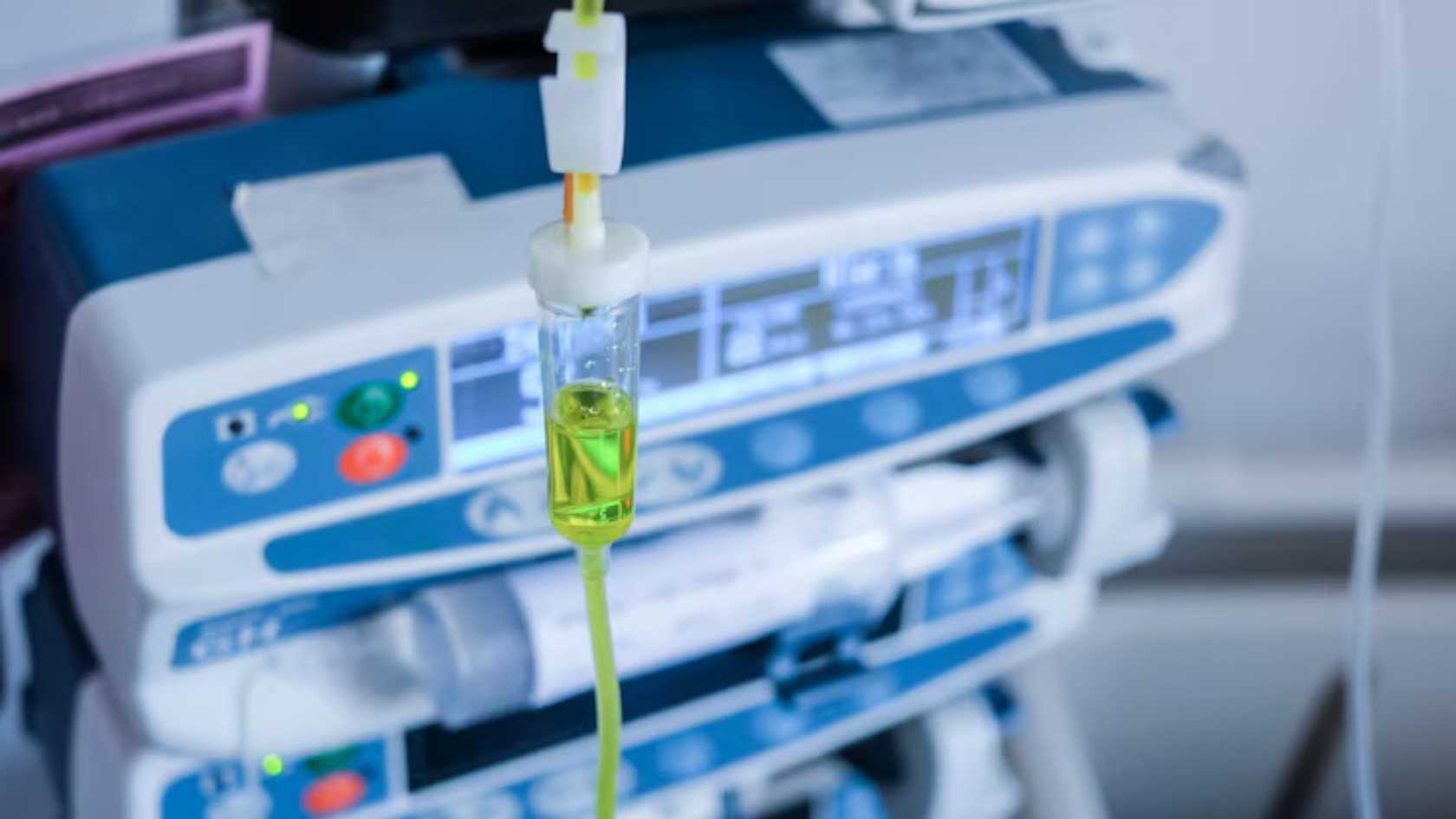Infusion pumps are essential tools in healthcare, commonly used in hospitals, clinics, and even home care settings. These devices help deliver precise amounts of fluids—like medications, nutrients, or saline—through intravenous (IV) therapy over a set period. Designed to improve accuracy and reduce the risk of human error, infusion pumps are a critical part of modern medical care, especially in emergencies or long-term treatments.
Whether it’s supporting a patient in recovery or maintaining stable fluid levels in chronic conditions, infusion pumps are designed with safety and reliability in mind. They come in different types, including syringe pumps and volumetric pumps, and can be programmed to match specific therapy needs. Because of their role in critical care, infusion pumps help nurses and healthcare professionals ensure that patients get the right dose at the right time.
Key Takeaways
- An infusion pump is a medical device that delivers fluids, like medications or nutrients, directly into a patient’s bloodstream with precision.
- These pumps are commonly used in hospitals, clinics, and home care settings to ensure accurate and controlled fluid delivery.
- Infusion pumps can be programmed to deliver fluids at specific rates and volumes, reducing the risk of human error.
- There are two main types: volumetric pumps for larger fluid volumes and syringe pumps for smaller, precise doses.
- Safety features like alarms alert healthcare providers to issues such as blockages or low battery, ensuring patient safety.
Table of Contents
Infusion Pump: What It Is, How It Works, and Why It’s Used
An infusion pump is a medical device that safely delivers fluids into a patient’s body. These fluids can include medication, blood, nutrients, or saline. The device is most often used in hospitals and care facilities but can also be used in home healthcare settings. Infusion pumps are often programmed by a nurse or healthcare provider to ensure the fluid is delivered at a precise rate and volume over a specific period.
There are many reasons someone may need an infusion pump. It may be used during surgery to deliver anesthesia, after surgery for pain management, or for patients who require regular medication, such as insulin or chemotherapy drugs. Because it controls the flow of the fluid, it helps reduce the chance of overdose or underdose, offering more safety than manual methods.
Infusion pumps work by drawing fluid from a bag or container and sending it into a patient’s vein using tubing and a needle. The healthcare provider can set how fast and how much fluid to give over time. Many pumps come with alarms that alert staff if something goes wrong, such as a blockage or low battery. The main benefit of infusion pumps is their ability to provide consistent, accurate treatment without constant supervision.
There are two primary types of infusion pumps: volumetric pumps and syringe pumps. Volumetric pumps are used for larger volumes of fluids and are common in hospital settings. Syringe pumps are used for smaller doses and often used in intensive care or neonatal units.
Both types help deliver IV therapy more accurately and are essential for modern-day treatment plans.
Types, Uses, and Features of Infusion Pumps
Volumetric Infusion Pumps
Volumetric infusion pumps are widely used in hospitals and clinics to deliver larger fluid volumes over time. These pumps are often used for hydration, parenteral nutrition, or antibiotic treatment. They work by drawing fluid from an IV bag and pushing it into the patient through a drip set. The healthcare provider sets the rate of flow and monitors the device for any alerts or malfunctions.
One of the key features of a volumetric pump is its ability to deliver fluids consistently. These pumps use sensors to detect air bubbles, blockages, or issues with flow. Alarms go off when there’s a problem, allowing quick action to avoid complications.
Volumetric pumps are especially helpful for patients who need long-term care or continuous medication over several hours or days.
Syringe Infusion Pumps
Syringe pumps are typically used for smaller, more precise doses. These are common in ICUs, neonatal care, or with drugs that require very slow and steady delivery. The medication is placed in a syringe, and the pump pushes the plunger slowly over time. Syringe pumps are ideal when a small amount of fluid needs to be infused with extreme precision.
Although smaller than volumetric pumps, syringe pumps also come with built-in safety features. They monitor flow rate, detect occlusions (blockages), and can trigger alarms if the device malfunctions. Nurses and clinicians favor syringe pumps for their accuracy and compact size, especially in crowded or mobile care environments.
Common Uses in IV Therapy
Infusion pumps are used in many areas of IV therapy. They are standard tools in chemotherapy, antibiotic delivery, pain management, and blood transfusions. In neonatal units, they are used to provide nutrients and fluids to premature babies. In home care, they help patients who need consistent treatment but do not require hospital admission.
Thanks to their programmable nature, infusion pumps allow clinicians to tailor treatment plans. This level of control is essential in cases where dosing needs to be exact, such as insulin infusions for diabetic patients or chemotherapy for cancer patients.
Key Safety Features
Most infusion pumps include important safety features like:
- Flow rate settings
- Occlusion detection
- Alarms for low battery or empty fluid bags
- Air-in-line sensors
- Lockout mechanisms to prevent unauthorized changes
These features protect the patient and allow healthcare professionals to focus on other aspects of care while the pump works continuously in the background.
Benefits, Limitations, and Maintenance of Infusion Pumps
Key Benefits of Infusion Pumps
Infusion pumps offer several advantages over manual fluid administration. One of the biggest benefits is accuracy. They allow precise delivery of fluids, which is especially important for medications that must be given in specific doses. With pumps, there’s less chance of human error, leading to safer patient care.
They also help save time for nurses and healthcare staff. Instead of having to manually administer medicine at regular intervals, caregivers can set the pump and monitor it occasionally. This improves efficiency and helps reduce burnout among clinical staff.
Infusion pumps are also highly customizable. They can be programmed to give medicine over minutes, hours, or even days, depending on the treatment needed. That flexibility makes them ideal for long-term treatments and chronic care management.
Common Limitations and Challenges
Despite their benefits, infusion pumps do have limitations. One of the main concerns is device malfunction. If the pump isn’t programmed correctly or if the sensors fail, the patient might receive too much or too little medication. That’s why routine monitoring and pump checks are important.
Another challenge is cost. Infusion pumps can be expensive to buy and maintain, making them less accessible in some healthcare settings. In home care, patients may need training or support to use the device correctly. In rare cases, incorrect use can lead to IV infiltration or other complications.
Regular Maintenance and Cleaning
To keep infusion pumps working safely, they must be cleaned and checked regularly. Most pumps need calibration to ensure they’re delivering fluids at the correct rate. Filters, tubing, and batteries should also be inspected and replaced as needed.
Healthcare workers are trained on how to use, program, and clean these devices. Many hospitals have biomedical engineers who inspect pumps and repair them when needed. Keeping the pump in good condition reduces the risk of problems and ensures reliable care.
Integration With Modern Healthcare
Today’s infusion pumps are often equipped with smart features, like digital touchscreens and connectivity to electronic health records (EHR). This makes it easier to track fluid delivery and patient data in real time.
Some newer models can even alert care teams remotely if a problem occurs. This technology allows for safer, more efficient monitoring, especially in home settings or during overnight care.
Need Safe, Reliable IV Therapy?
Frequently Asked Questions
An infusion pump is a device that delivers fluids like medicine or nutrients into the body in controlled amounts.
They are used in hospitals and homes to give medications, hydration, nutrients, or blood.
Yes, they have alarms and safety checks to prevent over- or under-dosing.
Syringe pumps give small, slow doses. Volumetric pumps are for larger, faster volumes.
Yes, with proper training, patients can use them at home for ongoing treatments.
A drip relies on gravity, while a pump uses a motor to control flow precisely.
Most do. Some also have battery backups for emergencies.
They should be checked regularly, cleaned, and calibrated by professionals.
Yes, especially syringe pumps, which deliver small, accurate doses.
Alarms sound, and the device can be stopped or replaced to avoid harm.


